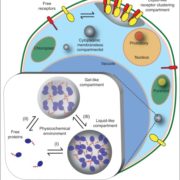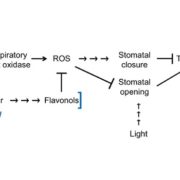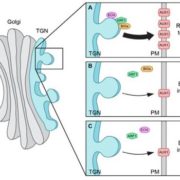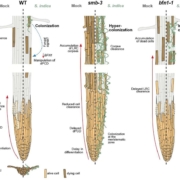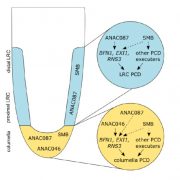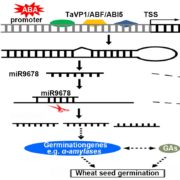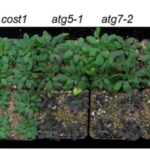FERONIA controls pectin- and nitric oxide-mediated male–female interaction (Nature)
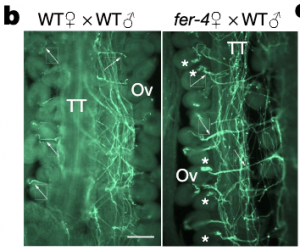 In flowering plants, fertilization occurs when a pollen tube, growing down the transmitting tissue, arrives at the ovule, ruptures, and releases its content of sperm cells. The pollen tube is guided towards the ovule by LUREs, small cysteine-rich secreted peptides. Timely rupturing and sperm release depend on the ovule-expressed receptor kinase FERONIA. In this paper, Duan et al. investigate molecular events taking place at the ovule to prevent additional, late-arriving pollen tubes from entering the ovule, so called polyspermy. They find that two FERONIA-dependent events: pectin de-esterification and nitric oxide production are involved in blocking polyspermy. They further show that nitric oxide can modify LURE1 on specific cysteine residues, and that the nitrosated peptide no longer functions as a chemoattractant in an in vitro pollen tube growth assay. While interesting questions remain as to the role(s) of FERONIA in the regulatory hierarchy, this paper suggests a molecular mechanism that helps ensure flowering plant fertilization fidelity. (Summary by Frej Tulin) Nature 10.1038/s41586-020-2106-2
In flowering plants, fertilization occurs when a pollen tube, growing down the transmitting tissue, arrives at the ovule, ruptures, and releases its content of sperm cells. The pollen tube is guided towards the ovule by LUREs, small cysteine-rich secreted peptides. Timely rupturing and sperm release depend on the ovule-expressed receptor kinase FERONIA. In this paper, Duan et al. investigate molecular events taking place at the ovule to prevent additional, late-arriving pollen tubes from entering the ovule, so called polyspermy. They find that two FERONIA-dependent events: pectin de-esterification and nitric oxide production are involved in blocking polyspermy. They further show that nitric oxide can modify LURE1 on specific cysteine residues, and that the nitrosated peptide no longer functions as a chemoattractant in an in vitro pollen tube growth assay. While interesting questions remain as to the role(s) of FERONIA in the regulatory hierarchy, this paper suggests a molecular mechanism that helps ensure flowering plant fertilization fidelity. (Summary by Frej Tulin) Nature 10.1038/s41586-020-2106-2
[altmetric doi=”10.1038/s41586-020-2106-2″ details=”right” float=”right”]


